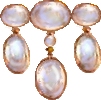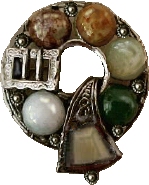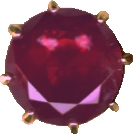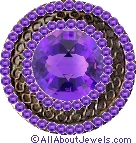
 |
| Our subscribers' grade-level estimate for this page: 3rd - 4th |
 |
Rock and Mineral Dictionary |
 |
| A | B | C | D | E | F | G | H | I | J | K | L | M | N | O | P | Q | R | S | T | U | V | W | X | Y | Z |
'a'a 'A'a (pronounced "ah-ah") is a Hawaiian term for a lava flow that has a rough, broken-up, spiny surface. It is composed of broken lava blocks called clinkers. The interior of 'a'a is very dense. |
accretion Accretion is the accumulation of sediment (mud, sand, etc.) by deposition, often occurring along a shoreline or in a river delta. |
 acid rain Acid rain is polluted and harmful to the environment. |
acroite Acroite is a rare, colorless variety of tourmaline. |
active volcano An active volcano is one that has erupted in recorded history or is currently erupting. |
adamantine Adamantine means having a luster like that of a diamond. |
 adularia Adularia is a common type of moonstone, a whitish-bluish semi-translucent stone. Adularia is usually set as a cabochon. Adularia was very popular early in the 20th century and was extensively used in Art Nouveau jewelry. Adularia has a hardness of 6 and a specific gravity of 2.57. |
adventurine Adventurine is a misspelling of aventurine (and sometimes known as goldstone) is a shimmering quartz stone that ranges in color from yellow to red to light green to light brown. The shimmer is caused by tiny metallic particles (mica) within the stone. |
aerosol An aerosol consists of tiny particles of liquids or solids suspended in the air. |
African emerald African emerald is a misnomer for green fluorspar that is mined in South Africa; it is not an emerald at all. |
African jade African jade (also called Transvaal jade) is a misnomer for massive green grossular garnet that is mined in South Africa; it is not jade, but does look like jade. It can be light green, white, or pink |
 agate Agate is a variety of chalcedony (a family of microcrystalline quartz). Agate is a very common stone that is often used in jewelry. It is found in a wide range of colors, including black, gray, brown, reddish, green, pink, blue, and yellow. Agate can be flecked with color and is often banded, exhibiting layers of quartz. Agate is porous and takes dye easily; it is frequently dyed to enhance the coloration and the banding. White agate was used often in Victorian jewelry, mostly as a background. Moss agate has green, red or black dendritic inclusions. Onyx is agate whose bands are parallel. Eye agate has banding arranged in concentric circles. Agate has a hardness of 6.5 to 7 and a specific gravity of 2.6. |
A Horizon The layer called topsoil; it is found below the O horizon and above the E horizon. Seeds germinate and plant roots grow in this dark-colored layer. It is made up of humus (decomposed organic matter) mixed with mineral particles. |
airfall Airfall (also called ashfall) is volcanic ash that falls from an ash cloud or a volcanic column. |
alexandrite Alexandrite is a mineral (a type of chrysoberyl) that appears to be different colors depending on whether it is viewed in natural or artificial light. Alexandrite appears to be red when seen in candle light and blue to green when seen in fluorescent light. Alexandrite was discovered on the birthday of the Russian Czar Alexander II, and it was named in his honor. Alexandrite is mined in Russia, Brazil, Burma, Ceylon, and Rhodesia. Laboratory-produced alexandrite is common, and it is often sold as natural alexandrite. Alexandrite has a hardness of 8.5 and a specific gravity of 3.64-3.74. |
Alexandrite Effect The "Alexandrite Effect" is a phenomenon in which a stone appears to be different colors depending upon the type of light it is viewed in. For example, the stone alexandrite appears to be red when seen in candle light and blue to green when seen in fluorescent light. Many other stones exhibit the "Alexandrite Effect," including garnet and sapphire. |
alloy An alloy is a combination of two or more metals. Common alloys used in jewelry are: gold under 24 Kt (mixed with silver, copper, and/or other metals), sterling silver (92.5% silver, 7.5% copper), brass (roughly half copper, half zinc), bronze (at least 60% copper with tin and perhaps other metals), and pewter (tin, lead, antimony, and a bit of silver or copper). |
 almandine Almandine is a type of violet-tinged variety of garnet that ranges in color from deep red to reddish-brown. Almandine is the most common kind of garnet. Star garnets are almandines that exhibit an asterism. Almandine has a hardness of 7.5 and a specific gravity of 3.85-4.20. |
aluminum Aluminum is a lightweight, silver-white metal. When aluminum was first discovered in the 18th century, it was more valuable than gold. Now inexpensive, aluminum is used in many alloys. Some inexpensive jewelry was made using aluminum. |
Amazonite Amazonite is an iridescent stone that ranges in color from green to blue-green. Amazonite is usually set as a cabochon (since it breaks easily if faceted). Amazonite has a hardness of 6.5 and a specific gravity of 2.56-2.58. |
 amber Amber is translucent fossilized tree resin (from conifers), a natural hydrocarbon that comes in many colors, including yellow, reddish, whitish, black, and blue. Amber is flammable. Rubbing amber produces static electricity. The word electricity comes from the Greek word for amber, "elektron." It used to be thought that amber possessed magical powers that protected the wearer from evil. Pressed amber consists of small pieces of amber that have been fused together to form a larger piece. Fake amber is easily made from plastics, and buyers must beware of cheap imitations sold as natural amber. Amber has a hardness of 2.5 and a specific gravity of 1.05-1.10. |
 amethyst Amethyst (Greek for "not drunken") is a form of the mineral quartz, and is a relatively common gemstone. Amethyst is usually purple, but can range in color from pale lavender to a very deep, reddish purple to a milky color to green. Deeper-colored amethysts are more highly valued. The ancient Greeks believed that amethyst made one immune to the effects of alcohol. Synthetic amethysts are hard to distinguish from the real stone. |
ametrine Ametrine is a variety of quartz, a mixture of amethyst and citrine. Ametrine is partially purple and partially orange-yellow. |
ammolite Ammolite (also known as korite, calcentine, or Buffalo Stone.) is a fossilized, opalized ammonite shell used as a gemstone (it is the shell of the ammonite, a fossilized marine animal, a cephalopod). It is a gray, iridescent stone with flashes of green, red, yellow, blue or purple (blues and purples are rare); the color changes as the stone is turned. Ammolite has a hardness of about 4 (it is very brittle before it is treated) and a specific gravity of 2.8. Ammolite is usually treated with a colorless, hard material to increase the strength of the stone and is often mounted as a doublet or a triplet (with a quartz top layer and a shale underside). Ammolite is only found in southern Alberta, Canada. |
amorphous Amorphous means without form. An amorphous gem, like jet, amber, or ivory, does not have a regular internal structure, like those gems that fall within the seven crystal systems. |
andesite Andesite is a type of volcanic rock. This gray to black rock is composed of about 54 to 62 percent silica (SiO2), plus some iron and magnesium. |
angelite Angelite (CaSO4); it is a pale blue variety of calicium sulfate = anhydrate (it is gypsum that has lost water and crystallized). The stone is quite brittle; crystals are transparent to transluscent. Angelite stone has a hardness of 3 to 3.5 (quite soft) and a specific gravity of 2.9 - 3.0. |
angelskin coral Angelskin coral is a pale pink coral, from deep sea coral. Angelskin coral is one of the most valued colors of coral (red is also highly prized). Coral is an animal that grows in colonies in the ocean. Coral polyps secrete a strong calcium structure that is used in jewelry making. Coral ranges in color from pale pink (called angelskin coral) to orange to red to white. In jewelry making, coral is either carved into beads, cameos, or other forms, or is left in its natural branch-like form and just polished. It used to be thought that coral protected the wearer, so it was a traditional gift to children. Coral has a hardness of about 3.5 and a specific gravity of 2.6 to 2.7. Since it is composed of calcium carbonate, coral will effervesce if touched with acid. Imitation coral is made from glass, porcelain, or plastic. |
 Apache tears Apache tears (a type of obsidian) is a volcanic glass that is usually black, but is occasionally red, brown, gray, green (rare), dark with "snowflakes," or even clear. This glassy, lustrous form of obsidian is found in lava flows in the southwest USA. Obsidian is formed when viscous lava (from volcanos) cools rapidly. Most obsidian is 70 percent silica. Obsidian has a hardness of 5 and a specific gravity of 2.35. The pin above is mahogany (brown) obsidian. |
apatite Apatite (calcium phosphate) is a clear to opaque stone that comes in many colors, including green, yellow, blue, violet, and yellow-green (called asparagus stone). Some apatite stones show a cat's eye asterism. This stone is rarely used in jewelry because it is brittle and soft. Apatite comes from the Greek word for "deceit," because it was easily confused with other minerals. Apatite has a hardness of 5 and a specific gravity of 3.15-3.22. |
aqua aura Aqua aura is a beautiful iridescent bluish to clear stone that is made by coating clear quartz that with a fine layer of gold (or aluminium or copper). In a process called called vapor deposition, the quartz is put into a vacuum chamber and attached to very hot electrodes. A thin layer of the metal (only a micron or two thick) coats the quartz as the metal evaporates. |
aquamarine Aquamarine is a transparent, light blue or sea-green stone that is porous. Today, blue aquamarines are more highly valued, but this was not true in the past, when sea-green stones were prized. Heat-treatment turns greenish stones bluer. The best aquamarines come from Brazil. Large aquamarines are relatively common. Aquamarines are usually faceted but when they are cabochon cut, a cat's eye effect or asterism may appear. Aquamarines belong to the beryl family of stones. Aquamarine has a hardness of 7.5-8 and a specific gravity of 2.65-2.85. |
aqua regia Aqua regia is a 3:1 mixture of hydrochloric acid and nitric acid. Aqua regia is used to test gold and platinum; it is one of the few substances that can dissolve gold and platinum. |
aragonite Aragonite is a mineral that is rarely used for jewelry. It is transparent to translucent and can range in color from honey-colored to pale reds, blues and greens to clear or white. It forms hexagonal crystals, pyramidal crystals, chisel shaped crystals, and other shapes. Aragonite has a hardness of 3.5-4 (relatively soft) and a specific gravity of 2.9 g/cm3.(average). Its chemical composition is CaCO3 (it is a form of Calcium Carbonate). Aragonite is named for Aragon, Spain, where it was first found in 1790. Aragonite is also found in many other European, North African, and some North American locations. |
Arctic opal Arctic opal is a blue-green stone that is a mixture of azuritea and malachite; it is not a type of opal at all. Arctic opal is mined in the Wrangle Mountains and the Chugach Mountains of Alaska, USA (near Anchorage). |
Arizona ruby An Arizona ruby is actually a pyrope garnet (and not a ruby at all). |
Arizona spinel An Arizona spinel is actually a garnet (and not a spinel at all). |
Arkansas diamond An Arkansas diamond is actually a rock crystal (and not a diamond at all). |
ash, volcanic Volcanic ash is a harsh abrasive type of ash (unlike ash from a wood fire) that is made up of small rock, mineral, and volcanic glass fragments (these fragments are less than 0.1 inch (2 mm) in diameter). |
assay An assay is a test of the purity of an alloy. A tiny piece of metal is scraped from the piece and the percentage of gold or silver is determined. Official assay offices determine whether a piece qualifies for an appropriate hallmark. |
asterism An asterism is a star-like luminous effect that reflects light in some gemstones, like star sapphires and star garnets. |
asthenosphere The asthenosphere (also spelled aesthenosphere) is a part of the Earth's upper mantle that exhibits plastic properties. It is located below the lithosphere (the crust and upper mantle), between about 100 and 250 kilometers deep. |
atmospheric shock wave An atmospheric shock wave is compressed air that is formed by a volcanic eruption. |
atoll An atoll is a ring (or partial ring) of coral that forms an island in an ocean or sea. |
atom Everything is made up of tiny atoms. An atom is the smallest part of an element that has the properties of that element. |
Australian ruby An Australian ruby is actually a pyrope garnet (and not a ruby at all). |
avalanche An avalanche is a a large mass of falling and/or sliding material. Avalanches can be composed of rock, snow, soil, or ice. Volcanic eruptions can cause avalanches. |
aventurine Aventurine (sometimes known as goldstone and sometimes mis-spelled adventurine) is a shimmering quartz stone that ranges in color from yellow to red to light green to light brown. The shimmer is caused by tiny metallic particles (mica) within the stone. |
aventurine feldspar Aventurine feldspar is also called Sunstone (a variety of oligoclase). This gemstone varies from golden to orange to red-brown, and can be transparent or translucent. Sunstone is metallic-looking due to sparkling red, orange or green crystalline inclusions (these are hematite or goethite crystals). Sunstone is found in Canada, the USA (in Oregon), India, Norway, and Russia. This brittle stone has a hardness of 6 and a specific gravity of 2.63 - 2.67. Sunstone is not enhanced. |
aventurine quartz Aventurine quartz is a type of quartz that has sparkling flecks (includions) of mica or iron. This colors of this stone include red-brown, yellow, gray, and green. Aventurine quartz has a hardness of 7 and a specific gravity of 2.64-2.69. This stone is usually cut with a flat or rounded surface to maximize its sparkle. Aventurine quartz is found in India, Russia, and Tanzania. |
axinite Axinite is an unusual, lustrous stone that is brown, yellow, blue, green or gray. Violet axinite is rare (and from Tasmania). It has both transparent and translucent varieties. Axinite is dichroic. Axinite has a hardness of 7 and a specific gravity of 3.3. Axinite is a boro-silicate of aluminum and calcium. It is used only as a mineral specimen and not in jewelry. |
 axis of symmetry An axis of symmetry (also called a rotational axis) is an imaginary line around which an object can be rotated a certain number of degrees and look like the original shape. When two planes of symmetry intersect, they form a straight line, which is an axis of symmetry. See more in the entry on crystal systems |
 azurite Azurite is a beautiful copper-based blue mineral that is often used in jewelry. The color ranges from very deep blue to pale blue. Azurite has also been used as a dye for paints and luxury fabrics. Azurite is hydrated copper carbonate; its chemical formula is Cu3(CO3)2(OH)2. Malachite (another copper-based mineral) and azurite are often found together. Azurite has a hardness of 3.5 to 4 (relatively soft) and a specific gravity of 3.7 to 3.9. Azurite is found in massive monoclinic crystals in Australia the southwestern USA, France, Mexico, Morocco, Nambia, Zaire, and Europe. Azurite is sometimes coated with a colorless wax or impregnated with plastic in order to enhance the color and increase the hardness. |
 |
Rock and Mineral Dictionary |
 |
| A | B | C | D | E | F | G | H | I | J | K | L | M | N | O | P | Q | R | S | T | U | V | W | X | Y | Z |
Enchanted Learning®
Over 35,000 Web Pages
Sample Pages for Prospective Subscribers, or click below
|
Overview of Site What's New Enchanted Learning Home Monthly Activity Calendar Books to Print Site Index K-3 Crafts K-3 Themes Little Explorers Picture dictionary PreK/K Activities Rebus Rhymes Stories Writing Cloze Activities Essay Topics Newspaper Writing Activities Parts of Speech Fiction The Test of Time
|
Biology Animal Printouts Biology Label Printouts Biomes Birds Butterflies Dinosaurs Food Chain Human Anatomy Mammals Plants Rainforests Sharks Whales Physical Sciences: K-12 Astronomy The Earth Geology Hurricanes Landforms Oceans Tsunami Volcano |
Languages Dutch French German Italian Japanese (Romaji) Portuguese Spanish Swedish Geography/History Explorers Flags Geography Inventors US History Other Topics Art and Artists Calendars College Finder Crafts Graphic Organizers Label Me! Printouts Math Music Word Wheels |
Click to read our Privacy Policy
| Search the Enchanted Learning website for: |